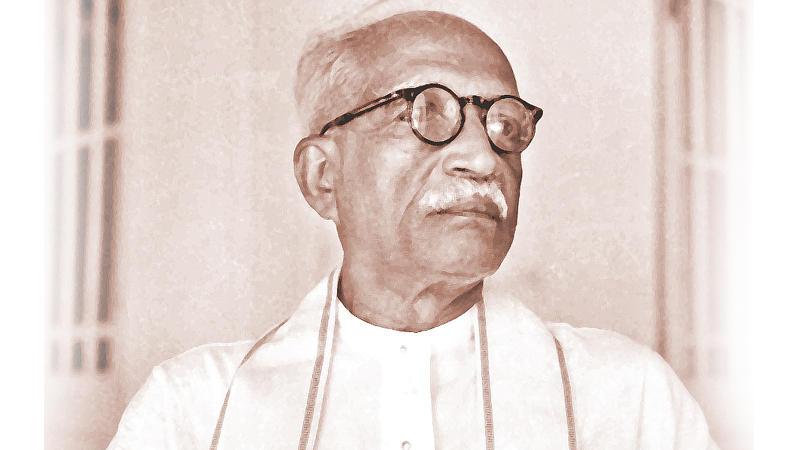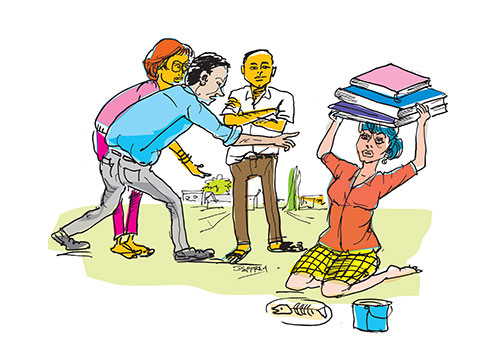UNIVERSITY GRANTS COMMISSION, COLOMBO: “Education in the margins faces a number of pedagogical issues against the backdrop of World Bank or similar donor-funded curriculum-revisions adopted by the University Grants Commission …”
By Erandika de Silva
It is a fact that there are disparities in access to education between the major population centres in Sri Lanka and those outside. Many of us are aware of the factors that create such disparities and these topics are often discussed in the media, academic circles and in the development sector, as well. Yet, with all this awareness, do we not still have our own misconceptions about students, teachers and other workers who study and work in peripheries? We talk of disparities in academic standards in the centre and the peripheries but how often do we stop to think of what access to education is like outside of the centre? Is standardisation through curriculum revisions going to magically improve standards and students’ access to education in the peripheries? This short piece aims to shed light on certain experiences from the north of Sri Lanka in relation to standardisation in the peripheries.
Setting the bar
Setting standards is the biggest challenge. The question is where to set the bar knowing that not every student starts both school and university education on a level playing field. For instance, every city has its own centres and peripheries. My experience, as a member of the panel of judges for a zonal level English Day competition was a rude awakening to the inequalities between the centres and peripheries in Jaffna. A well-resourced/privileged Christian school, in Jaffna, rendered an outstanding performance which was a flashy display of their resources, and the intellectual support they receive from the adults around them. The script, too, stood out from the rest of the schools due to its subject matter: It was an English play on how the land acquisition and redistribution in the 1950s affected the landowning gentry in Sri Lanka. Even in its subject matter, the play sympathised with a middle-class family that faced catastrophic effects due to the Land Acquisition Act of 1950. The other plays were English plays with scripts possibly written by schoolchildren on everyday matters, and performed with minimal theatre resources. My dilemma, as a judge, was how to judge these performances when the inequalities were right in my face. Where do we set the bar then? Is not the centre the standard by default? Is the standard equitable then?
At the university, too, setting the bar is a challenge as certain academic departments must canvass for students to offer special degrees if they do not fulfil the required quota of students. Such canvassing, more often than not, is done as affirmative action and it results from a moral/ethical dilemma on the part of the university teachers who understand the need for producing graduates to eventually become school teachers who could, in turn, contribute to education in the north and east. It is often done on the basis that something is better than nothing. One may, then, raise the question whether affirmative action affects standards. This is exactly the kind of dilemmas faced by educators from the margins.
There is also a question of quality and standards when it comes to external degree programmes that mostly attract school teachers where English as a subject is concerned. These programmes are haphazardly and arbitrarily delivered with just four lectures per course each semester which makes us question whether the University’s drive towards standardisation applies to internal degree programmes only, and if so, why?
Navigating and negotiating Taylorism in the classroom
Education in the margins faces a number of pedagogical issues against the backdrop of World Bank or similar donor-funded curriculum-revisions adopted by the University Grants Commission. These donor-funded education policy revisions and curriculum transformations cater to a “scientific” and managerial approach to education through their monitoring, evaluation, and quality assurance mechanisms. What goes unnoticed is that such approaches are no more than an extension of Frederick W. Taylor’s “scientific management” of industry into the domain of education. In twentieth-century United States, Taylor’s “scientific management” of the workplace maximised efficiency and productivity through standardisation, mechanisation and itemisation of labour. Taylor’s system was swiftly taken up by business and industry, and it gradually permeated to education, and beyond. With monitoring, standardised testing, institutional authority and control permeating the public university system, and hiring of “efficiency experts” to evaluate educational operations, higher educational is reduced to production lines that are meant to cater to the demands of the capitalist economy.
What do we make of the quantitative metrics that are introduced to measure the productivity of educational programmes and the extension of the principles of “scientific management” and efficiency into higher education? The danger is that these metrics are taken as gospel truth in determining the “employability” of graduates. Previous Kuppi columns explored the damaging effects of metrics on Arts and Humanities. Certain disciplines run the risk of extinction in the face of narrow rhetoric and metrics that boil down education to “employability”. These metrics are also detrimental as “employability” has become the measure of determining whether tax payers’ money is put to good use or not. There have been national reports that discourage Arts education on baseless grounds that arts graduates are unemployable.
A question worth addressing is what these quantitative metrics do to students. In the Arts and Humanities faculties, curricula are injected with an artificially formed set of standards that are and hence seem to be unachievable to the students. There is a lot of groundwork to be done before one can even engage with such bureaucratically (mal?)formed outcome-based educational methodologies. It would make more sense to set down prerequisites for a course and allocate some time for students to fulfil those where necessary.
Bending and mending the rules on fair and equitable grounds
While university teachers are the gatekeepers in academia, there are also instances where they bend and mend the rules where necessary on fair and equitable grounds. For instance, my (limited) teaching experience at Jaffna University has produced before me numerous reasons as to why my students deserve some leniency when it comes to attendance, deadlines, and marking. When students submitted their first set of assignments to me in my first term of work, I was surprised to see that their assignments did not show adherence to any standard referencing format. I was teaching an undergraduate class in the second year where the students barely had any knowledge of standard referencing and acts of academic misconduct. There are, of course, moments when we do question these standard practices but as an educator, the dilemma would be to decide whether to penalize the students for not following academic guidelines or to investigate the reasons as to why the students have failed to follow academic guidelines. The question is, whether, in a highly bureaucratic and autocratic system, addressing such issues flexibly is possible. Are all teachers happy or willing to go the extra mile of work to bridge any gaps or disparities among first/second year students who come from various backgrounds? Even if they are willing, can university teachers afford such exercises while managing teaching, evaluation, research and administrative work?
Higher education administrators are (mis?)guided by a supposed scientific system of pedagogical management that lures higher education into an orchestrated effort of measuring results against fixed standards, task- and outcome-based results. It is thought that synchronization of outcomes will produce a graduate who is capable of achieving an objective goal. It presumes to iron out differences. But these “templatized” assessments and outcome-based methodologies overlook the creative capacities, differences and potentials of students. Students in the peripheries need a lot preparatory work if they are to achieve these standards. Standardization does not make sense without efforts to address these systemic issues.
Most educational reforms, and curricular revisions/transformations are introduced with the intention of tightening up bureaucratic slack in higher educational institutions, and thereby standardizing education across institutions and disciplines. But can such measures address inequalities entrenched in the socio-economic spheres of Sri Lanka? Is standardizing education desirable if inequalities that affect students’ access to quality education is not addressed simultaneously? How is it possible to standardize education if inequalities in access to both secondary and tertiary education persist? Without equal access to primary and secondary education and opportunities, standardized higher education is nothing more than what DuBois termed “a mountain path to Canaan” where the peripheries will be in a constant battle to learn the “cabalistic letters of the white man”.
“It was weary work. The cold statistician wrote down the inches of progress here and there, noted also where here and there a foot had slipped or someone had fallen. To the tired climbers, the horizon was ever dark, the mists were often cold, the Canaan was always dim and far away.”
-W.E.B. DuBois



